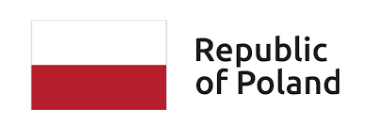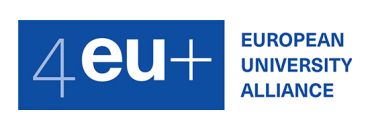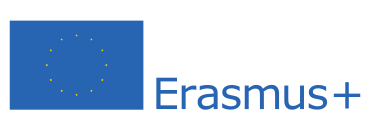Weekly research seminar
Organizers
- dr Oskar Skibski
- dr hab. Piotr Skowron
Information
Thursdays, 10:15 a.m. , room: 4050Research fields
List of talks
-
Nov. 22, 2018, 10:15 a.m.
Oskar Skibski (Instytut Informatyki, UW)
Attachment Centrality: Properties and Computation
Centrality indices aim to quantify the importance of nodes or edges in a network. Much interest has been recently raised by the body of work in which a node’s connectivity is understood less as its …
-
Nov. 8, 2018, 10:15 a.m.
Tomasz Wąs (Instytut Informatyki UW)
Random Walk Decay Centrality
We propose a new centrality measure, called the Random Walk Decay centrality. While most centralities in the literature are based on the notion of shortest paths, this new centrality measure stems from the random walk …
-
Oct. 26, 2018, 12:15 p.m.
Dominik Peters (Department of Computer Science, University of Oxford)
Allocation of Indivisible Items with Connected Bundles
Suppose a collection of indivisible goods are arranged in a line, and we wish to allocate these items to agents so that each agent receives a connected bundle (an interval). This makes sense when the …
-
Oct. 18, 2018, 10:15 a.m.
Marcin Dziubiński (Instytut Informatyki, UW)
How to hide in a network
We propose and study a strategic model of hiding in a network, where the network designer chooses the links and his position in the network facing the seeker who inspects and disrupts the network. We …
-
May 10, 2018, 10:15 a.m.
Tomasz Wąs (Instytut Informatyki, UW)
Axiomatization of the PageRank centrality
We propose an axiomatization of PageRank. Specifically, we introduce five simple axioms – Foreseeability, Outgoing Homogeneity, Monotonicity, Merging, and Dummy Node – and show that PageRank is the only centrality measure that satisfies all of …
-
April 12, 2018, 10:15 a.m.
Piotr Skowron (Instytut Informatyki UW)
Approximating Optimal Social Choice under Metric Preferences
We consider voting under metric preferences: both voters and alternatives are associated with points in a metric space, and each voter prefers alternatives that are closer to her to ones that are further away. In …
-
March 29, 2018, 10:15 a.m.
Krzysztof Rządca (Instytut Informatyki, UW)
Collective Schedules: Scheduling Meets Computational Social Choice
When scheduling public works or events in a shared facility one needs to accommodate preferences of a population. We formalize this problem by introducing the notion of a collective schedule. We show how to extend …
-
March 15, 2018, 10:15 a.m.
Jadwiga Sosnowska (Instytut Informatyki UW)
Path Evaluation and Centralities in Weighted Graphs – An Axiomatic Approach
We study the problem of extending the classic centrality measures to weighted graphs. Unfortunately, in the existing extensions, paths in the graph are evaluated solely based on their weights, which is a restrictive and undesirable …
-
Jan. 25, 2018, 10:15 a.m.
Rahul CS (Instytut Informatyki, UW)
Group Activity Selection parameterized by the Number of Agent Types
We study the parameterized complexity of GASP (Group Activity Selection Problem) and its variant gGASP w.r.t. the number of different agent types as a parameter. We show that GASP can be solved in polynomial time …
-
Jan. 11, 2018, 10:15 a.m.
Oskar Skibski (Instytut Informatyki, UW)
A Pseudo-Polynomial Algorithm for Computing Power Indices in Graph-Restricted Weighted Voting Games
Weighted voting games allow for studying the distribution of power between agents in situations of collective decision making. While the conventional version of these games assumes that any agent is always ready to cooperate with …
-
Dec. 21, 2017, 10:15 a.m.
Marcin Waniek (Khalifa University of Science and Technology)
Strategic Network Diffusion
Spreading of ideas in a social network is usually modelled in the literature as a stochastic process. However, in many real-life applications the exact course of the diffusion can be guided by a certain individual …
-
Dec. 7, 2017, 10:15 a.m.
Jan Woźnica (Instytut Informatyki, UW)
Strategic Evasion of Centrality Measures
Among the most fundamental tools for social network analysis are centrality measures, which are designed to rank nodes according to various criteria. Similarly to other tools, they were built around the assumption that individuals in …
-
Nov. 30, 2017, 10:15 a.m.
Marcin Dziubiński (Instytut Informatyki, UW)
Hide and seek game with heterogenous hiding places
We study a conflict with multiple battlefields where two players, the hider and the seeker, choose their respective numbers of hiding places. The hiding places have different values and the score of the hider is …
-
Nov. 9, 2017, 10:15 a.m.
Tomasz Wąs (Instytut Informatyki, Uniwersytet Warszawski)
An Axiomatization of the Eigenvector and Katz Centralities
Feedback centralities are one of the key classes of centrality measures. They assess the importance of a vertex recursively, based on the importance of its neighbours. Feedback centralities includes the Eigenvector Centrality, as well as …
-
Oct. 26, 2017, 10:15 a.m.
Krzysztof R. Apt (Instytut Informatyki, Uniwersytet Warszawski)
Self-Stabilization Through the Lens of Game Theory
In 1974 E.W. Dijkstra introduced the seminal concept of self-stabilization that turned out to be one of the main approaches to fault-tolerant computing. We show here how his three solutions can be formalized and reasoned …
 You are not logged in |
You are not logged in |
















